Systematic Trading
Autor Robert Carveren Limba Engleză Hardback – 13 sep 2015
Preț: 278.28 lei
Preț vechi: 306.55 lei
-9% Nou
53.25€ • 55.75$ • 44.06£
Carte disponibilă
Livrare economică 15-29 martie
Livrare express 01-07 martie pentru 73.38 lei
Specificații
ISBN-10: 0857194453
Pagini: 325
Dimensiuni: 170 x 244 x 19 mm
Greutate: 0.68 kg
Editura: HARRIMAN HOUSE LTD
Notă biografică
Robert Carver is Professor of Business Administration at Stonehill College in Easton, Massachusetts, and Adjunct Professor at the International Business School at Brandeis University in Waltham, Massachusetts. At both institutions, he teaches courses on business analytics in addition to general management courses, and he has won teaching awards at both schools. His primary research interest is statistics education. A JMP user since 2006, Carver holds an A.B. in political science from Amherst College in Amherst, Massachusetts, and an M.P.P.and Ph.D. in public policy from the University of Michigan at Ann Arbor.
Descriere
This is not just another book with yet another trading system. This is a complete guide to developing your own systems to help you make and execute trading and investing decisions. It is intended for everyone who wishes to systematise their financial decision making, either completely or to some degree. Author Robert Carver draws on financial theory, his experience managing systematic hedge fund strategies and his own in-depth research to explain why systematic trading makes sense and demonstrates how it can be done safely and profitably. Every aspect, from creating trading rules to position sizing, is thoroughly explained. The framework described here can be used with all assets, including equities, bonds, forex and commodities. There is no magic formula that will guarantee success, but cutting out simple mistakes will improve your performance. You'll learn how to avoid common pitfalls such as over-complicating your strategy, being too optimistic about likely returns, taking excessive risks and trading too frequently. Important features include: - The theory behind systematic trading: why and when it works, and when it doesn't. - Simple and effective ways to design effective strategies. - A complete position management framework which can be adapted for your needs. - How fully systematic traders can create or adapt trading rules to forecast prices. - Making discretionary trading decisions within a systematic framework for position management. - Why traditional long only investors should use systems to ensure proper diversification, and avoid costly and unnecessary portfolio churn. - Adapting strategies depending on the cost of trading and how much capital is being used. - Practical examples from UK, US and international markets showing how the framework can be used. Systematic Trading is detailed, comprehensive and full of practical advice. It provides a unique new approach to system development and a must for anyone considering using systems to make some, or all, of their investment decisions.
Cuprins
Preface
- Systematic trading and investing
- Who should read this book
- Overview - what is coming
Introduction
- September 2008: The Billion Dollar Day
- January 2009: Why (most) humans make poor traders
- The black box is simpler than you think
- An open source revolution
- An open source systematic framework
PART ONE: THEORY
The good, the bad and the ugly of systematic trading
- Humans should be great traders - in theory
-- The death of rational economic man
-- Why we run losses and stop out profits
- Introducing a systematic rule for trading
-- Stick to the rules and don't meddle
-- Overcoming instinct - why 'contra' instinctive behaviour works
-- Why subjective 'systems' don't work
- Commitment mechanisms - how do we stop ourselves 'meddling'?
-- Automation - the use of dogs in finance and engineering
- Systematic trading in financial institutions
The commitment problem does not go away...
-- . but there are benefits
- The ideal systematic trading shop
- Two more tricks to reduce meddling
-- Abstraction
-- Ignorance
- Designing systems to discourage meddling - the three virtues
-- Trust your system
-- Understand the limits of your ignorance
-- Sleep at night: Position size is as important than position sign
- When is meddling acceptable?
-- Unacceptable meddling
-- Acceptable meddling
- Irrationality in trading system development - the three sins
-- Overfitting
-- Overtrading
-- Overbetting
Systematic strategies
- Why do strategies 'work'?
-- Risk premia
-- Frictions and barriers to entry
-- Information less trading
-- Returns to effort and cost
-- Behavioural effects
-- Pure alpha:skill
- What makes a good strategy?
-- Intuitive
-- Well motivated
-- As simple as possible
-- Can be systematised
- Categorising the strategy universe
-- Static versus Dynamic
-- Buying and selling insurance
-- Technical vs fundamental
-- Fast vs Slow
-- Directional vs cross sectional
-- Low versus high leverage
-- Many positions vs few positions
-- Crowd following vs contrarian
PART TWO: THE TOOLBOX
- Model selection, calibration and fitting
-- The perils of overfitting
-- Distinguishing dud models from good models
-- Fitting and overfitting
- Four rules for effective fitting
-- Start with a small number of ideas, not with data
-- Save real data for a rainy day; use artificial data
-- Don't fit unless there is a gun to your head
-- If you must fit to real data, be very, very careful
- Portfolio allocation
-- Anecdote: When smart people make stupid decisions
-- The bad news: Portfolio optimisation is hard
-- A simple fix: bootstrapping
-- 'Handcrafting' the weights: The heuristic method
-- Some problems
-- The good news
PART THREE: THE FRAMEWORK
An 'open source' framework for systematic trading and investing
- Why an open source framework?
-- Parallels with open source software
-- Flexibility
-- Individual seperable components with well defined interface
-- Underlying logic exposed â+' easily modified
- The elements of the framework
-- Instruments to trade
-- One or more signals
-- Forecasts - combinations of signals
-- Scaled positions
-- Portfolios of positions
-- Total capital scaling - money management
-- Risk measurement and control
- Modifying and extending the 'open source' framework
Instruments - the building blocks
- Asset classes: Stocks, bonds, ETF's, futures, CFD's ...
- The character of different instruments
- Portfolios as instruments
- Spreads - a special kind of portfolio instrument
- Summary - key points
Signals - looking under the hood
- What is a signal?
- What properties should signals have?
-- A signal is a scaled quantity
-- But what scale
-- Why it makes sense to have a unit variance signal
-- Are jumpy signals okay?
-- Should we allow signals to be as large as possible?
-- Three signals in detail
-- Summary
From signals to forecast
- Combination
-- Linear versus non linear
-- Choosing the weights - we need portfolio optimisation
-- The diversification multiplier
- Mapping function
-- Binary
-- Linear
-- Linear with cutoffs (recommended)
-- Linear with flat spot
- Summary - the default system does...
Position scaling
- The magic number
- Position is signal over standard deviation
- Expected volatility
-- How do we measure expected volatility?
-- Dangers of low volatility
-- A rule for low volatility
- Summary - the default system position scaling is...
Instrument weights - more portfolio allocation
- Linear weighting for portfolios
- Portfolio optimisation amongst instruments
-- Which grouping for the heuristic?
-- Multiple dimensions
-- Portfolios of spreads
- The diversification multiplier, part two
- Summary
Total capital scaling: Risk appetite and money management
- How much can you lose?
- A brief primer on the Kelly Criteria
- From Sharpe to Kelly
- The total capital scaling rule
-- Low risk target, high worst loss; or high risk target, low worst loss?
-- Upside ratcheting and downside adjustment
- Special cases: Interest paying, living off the proceeds and principal protection
- Summary
Risk measurement and risk control
- Some risk management issues
-- What is risk and how do we measure it?
-- Risk that's hard to measure
-- Two key flavours of system for risk management
- Built in risk management
-- Risk managing at a signal level
-- Risk managing at an instrument level
- System level risk management
-- Maximum estimated risk
-- Correlation risk - the perfect storm
-- Jump risk redux - low volatility
-- Combining them - the worst case scenario multiplier
-- The clipping problem
- Outside the system - the risk envelope
-- The risk envelope exists to avoid meddling
-- Measuring the envelope
-- Applying the envelope
- Buying an insurance against poor performance
- Summary
Tailoring
- Speed of trading
-- Calculating the damage from trading too quickly
-- Decomposing and calculating the cost of trading
-- Applying the brakes - how to slow down
-- Costs and calibration
-- Some subtleties
- Trading with more or less capital
-- Trading with more capital
-- Trading with less capital
PART FOUR: PRACTICE
Example one: Systematic trading for discretionary traders
- Why use a systematic framework with discretionary decisions?
-- Instruments
-- Signals
-- Forecasts
-- Position scaling
-- A 'portfolio' of trades
- Total capital scaling
- Risk control
- Worked portfolio example
- Extensions
Example two: Systematic asset allocation; a long only risk parity portfolio
- A risk parity system
- Instruments to trade
- World's dullest signal and forecast
- Position scaling
- Portfolio construction - the difficult part
-- Bootstrap method
-- Heuristic method
- Total capital scaling
- Risk control
- Worked portfolio example
- Extensions
Example three: Fully systematic futures trading system
- A futures system
- Instruments
- Signals
-- Momentum
-- Carry
- Combining signals to get forecasts
-- Cost estimation
-- Heuristic
-- Bootstrapping
- Position scaling
- A portfolio of instruments
-- Heuristic
-- Bootstrap
- Total capital scaling - the dangers of easy leverage
- Risk measurement and control
- Worked portfolio example
- Extensions
Appendices
Appendix A: Resources
Further reading
Data sources
Brokers and platforms
Coding
Appendix B: Formulas
Backtesting
- Accounting
- Costs
- Judging the results
-- Sharpe ratio
-- T- test
-- Skew
Fitting
Iterative binary grid search
Portfolio construction
- Markowitz portfolio optimisation
- Bootstrapped portfolio optimisation
- By hand portfolio optimisation
-- Means
-- Costs - specific case of means
- Linear portfolio weighting and calculating the diversification effect
- Nearest portfolio
Signals
- Random entry stop loss
- Flip flop stop loss
- Basic moving average crossover
- Exponetial moving average crossover
- Raw carry signal for generic asset
- Raw carry signal futures contracts
- Smoothed carry signal
From signal to forecast
- Individual signal scaling
- Linear signal combination and calculating the diversification effect
- Forecast mapping functions
- Linear with cap
-- Binary
-- Cutoff
- Position scaling
-- Volatility estimation
- Minimum volatility rule
- Final position calculation
- Portfolios of instruments
- Total capital scaling
-- Establishing the initial scalar
-- The auto ratchet down
-- The manual ratchet up
- Risk measurement and control
-- Natural risk scalar
-- Vol shock risk scalar
- Correlation shock scalar
- Total risk scalar
- System performance envelope
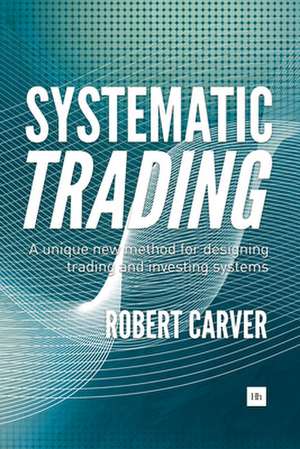


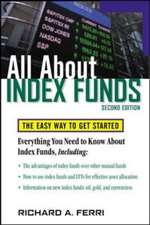

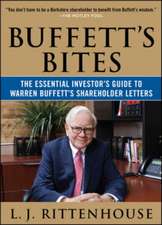







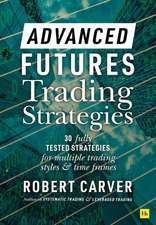
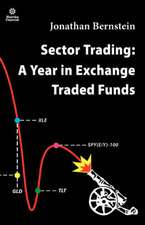


![Contingent Convertibles [Cocos]](https://i4.books-express.ro/bt/9789814619899/contingent-convertibles-cocos.jpg)